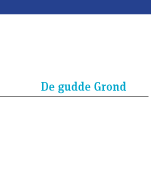
|

|

|

|
|
||||
|
|
||||
|
Lucien Wercollier Sculptures |
||||

|
||||
| { exposition } | ||||
|
||||
 Déambulatoire Déambulatoire
|
||||
|
Billetterie : Entrée libre 10:00 à 18:00 |
||||
|
Info : Visites guidées à la demande, Email: contact@neimenster.lu |
||||
|
FR: Pierre, bronze, marbre, albâtre, verre, l'oeuvre de Lucien Wercollier est inscrite dans ces matériaux divers que tour à tour il découvrira et ne quittera plus. Une oeuvre à (re)découvrir à l'Abbaye de Neumünster où la collection privée de la famille Wercollier est réinstallée dans le déambulatoire de l'Abbaye, dans une scénographie spécialement conçue pour le lieu. Si les sculptures de Wercollier sont présentes en de nombreuses collections et de nombreux musées publics au Luxembourg et à l'étranger (Musée d'Art Moderne de Paris, Israel Museum de Jérusalem, Musée Olympique de Lausanne, Olympic Sculptures Parc de Séoul, Palais de l'Europe à Strasbourg...) cette exposition permanente est le seul ensemble qui documente la vie et l'oeuvre de l'un des grands artistes du XXe siècle. Né en 1908, Lucien Wercollier s'est éteint en 2002, à l'âge de 94 ans. Entre ces deux dates, les années de formation à Bruxelles et à Paris, la découverte de Maillol, Brancusi et Arp, mais aussi les années de guerre, l'arrestation et l'incarcération à la prison du Grund puis la déportation en Allemagne et en Silésie, feront d'un sculpteur talentueux, un artiste d'exception, à « la recherche de l'accord le plus total entre lignes, structures, formes et signification, accord de plus en plus profond et parfait » (G. Wagner). DE: Lucien Wercollier gilt als einer der wichtigsten Protagonisten der zeitgenössischen luxemburgischen Kunst und als einer der größten Bildhauer des 20. Jahrhunderts. Während der deutschen Besatzung Luxemburgs weigerte er sich in die Nazi-Kulturkammer einzuschreiben und nahm am Nationalstreik von 1942 teil. Daraufhin wurde er festgenommen und vom 4. bis zum 19. September 1942 im Grundgefängnis interniert, bevor er in die Konzentrationslager Hinzert, Lublin und schließlich nach Schlesien deportiert wurde. Sechzig Jahre später wurde das Grundgefängnis zum Kulturzentrum Abtei Neumünster umgewandelt und dort werden seitdem die Werke seiner persönlichen Kollektion als permanente Ausstellung gezeigt. Die Skulpturen werden dem Kulturzentrum Abtei Neumünster von den Kindern und Enkelkindern des Künstlers zur Verfügung gestellt. Das Werk `Der politische Gefangene` wurde, mit Genehmigung der Familie Wercollier, dank der Unterstützung der Nationalstiftung des Widerstands gegossen. EN: Stone, bronze, marble, alabaster, glass: the work of Lucien Wercollier is written in these different materials, which he discovered, one by one, and never left behind again. Works to be (re)discovered at the Abbey of Neumûnster where the private collection of the Wercollier family is placed in the ambulatory, in a scenography which was specially created for this location. If the sculputures of Wercollier are present in many collections and in many public museums of Luxembourg and abroad, this permanent exposition is the only one which regroups the works which document the life and the work of one of the Twentieth century's greatest artists. Born in 1908, Lucien Wercollier died in 2002 at the age of 94. Between these two dates were the years of training in Brussels and in Paris, the discovery of Maillol, Brancusi and Arp, but also the war years, arrestation and imprisonment in the Grund prison then deportation to Germany and Silesia, years which were to make of this talented sculpteur an exceptional artist, `searching for the most complete harmony among lines, structures, forms and meaning, harmony that was more and more profound and perfect" (G. Wagner). `Pure volumes and a very clear order had the highest degree of importance for me` the artist confided. The works exposed at the Abbey allow the path of the man and the work of the artist, both of which were linked, to be joined. The man did not like `violent oppositions and tortured shapes` (N. Scuri). 25 sculptures testify to this. |
||||
|
Organisation: neimënster / Soutien: Ministère de la Culture |
||||
|
|
||||
|
|
|
|
